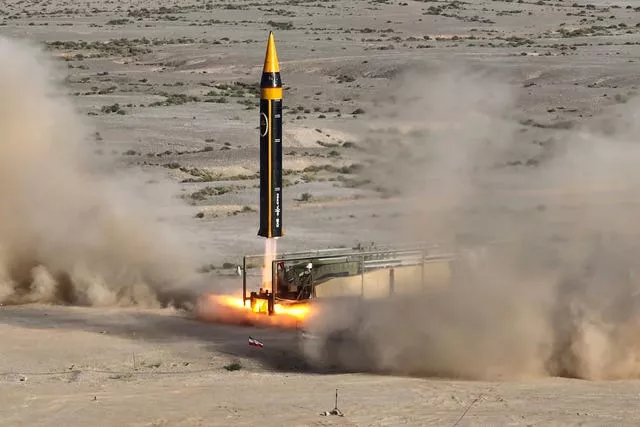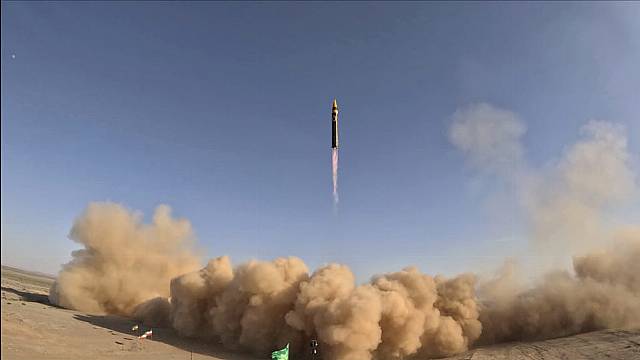Iran has unveiled what it has dubbed the latest iteration of its liquid-fuelled Khorramshahr ballistic missile.
It comes amid wider tensions with the West over the country’s nuclear programme.
Authorities showed off the Khorramshahr-4 to journalists at an event in Tehran, with the missile on a truck-mounted launcher, on Thursday.
Defence minister General Mohammad Reza Ashtiani said the missile could be prepared for launch in a short period.
Iranian officials described the missile as having a 1,240-mile range with a 1,500kg (3,300lb) warhead.

They also released undated video footage purportedly showing a successful launch of the missile.
The Khorramshahr-4 is named after an Iranian city that was the scene of heavy fighting during the Iran-Iraq War in the 1980s.
The missile is also called Kheibar after a Jewish fortress conquered by the Muslims in the seventh century in what is now Saudi Arabia.
Regional tensions likely played a role in Iran’s missile display on Thursday.
A miniature example of Jerusalem’s golden Dome of the Rock on the Al-Aqsa Mosque compound, a holy site in both Islam and Judaism that Jews call the Temple Mount, stood next to the mobile launcher.

Iran views Israel as its archenemy and is arming anti-Israeli militant groups in the Palestinian territories and surrounding countries.
Tensions between the two nations are high, particularly as Iran enriches uranium closer than ever to weapons-grade levels.
The Khorramshahr would be able to reach Israel.
It remains unclear, however, why the missile has been called Khorramshahr-4 as only two other variants of the missile are publicly known.
It is modelled after North Korea’s Musudan ballistic missile.
US state department spokesman Matthew Miller said Washington was aware of the missile report and reiterated that “Iran’s development and proliferation of ballistic missiles poses a serious threat to regional and international security.”







